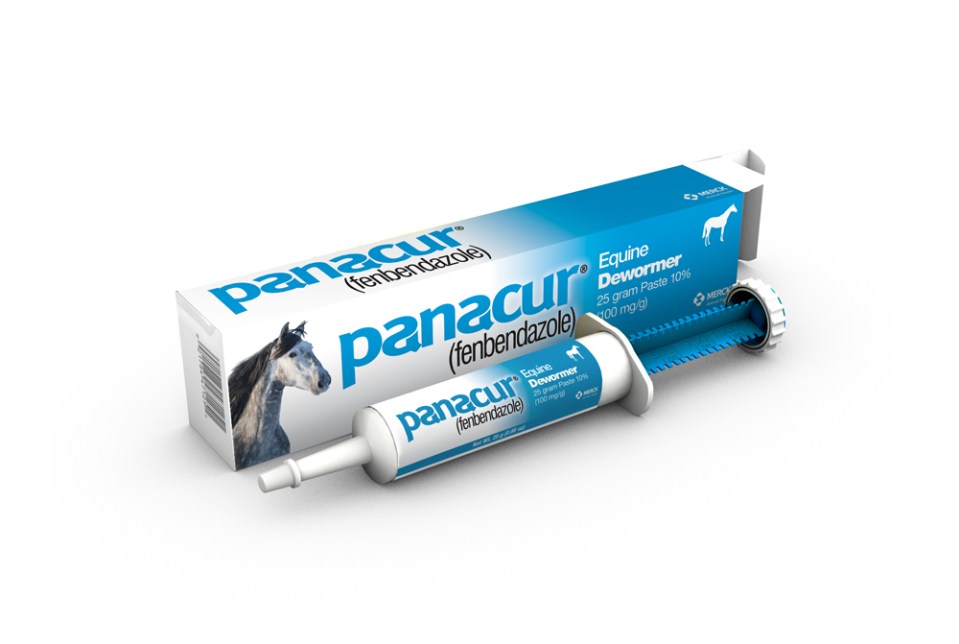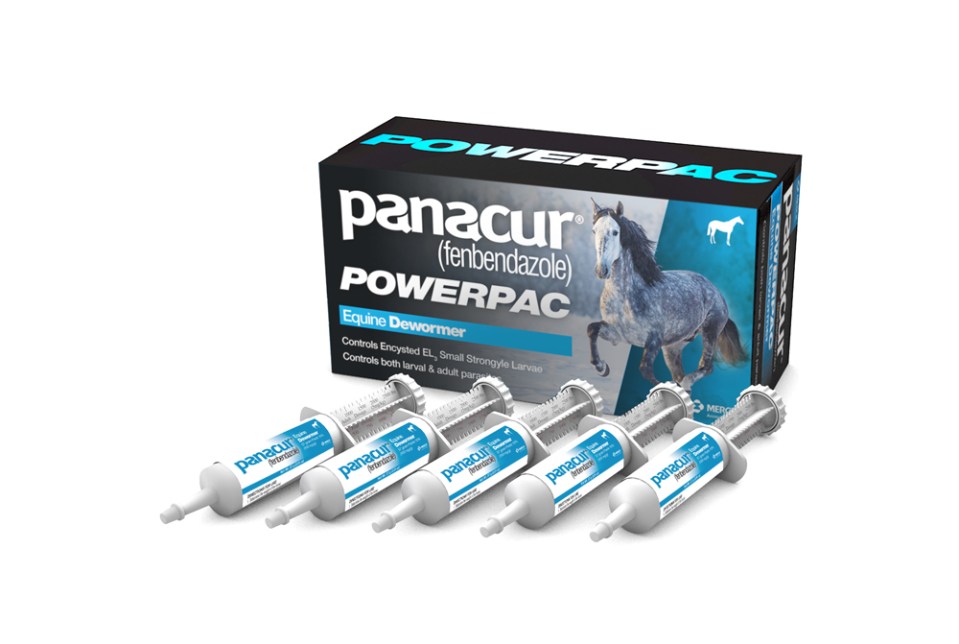
Pinworms
Parasite Overview
The equine pinworm, Oxyuris equi, is more common in young horses but can infect horses of any age. Although larvae are known to cause inflammation in the large intestine, they do not usually cause clinical illness. The most common problem associated with pinworms is itching of the anus area caused by eggs deposited and adhering to the skin, which may progress to tail-rubbing.
Merck Animal Health Solutions

PANACUR® (fenbendazole) PASTE 10%
PANACUR® Paste 10% is indicated for the treatment and control of large strongyles (Strongylus edentatus, S. equinus, S. vulgaris), encysted early third stage (hypobiotic), late third stage and fourth stage cyathostome larvae, small strongyles, pinworms (Oxyuris equi), ascarids (Parascaris equorum), and for the control of arteritis caused by fourth stage larvae of Strongylus vulgaris in horses.

PANACUR® (fenbendazole) POWERPAC
PANACUR® (fenbendazole) Paste 10% is indicated for the control of large strongyles (Strongylus edentatus, S. equinus, S. vulgaris), encysted early third stage (hypobiotic), late third stage and fourth stage cyathostome larvae, small strongyles, pinworms (Oxyuris equi), ascarids (Parascaris equorum), and arteritis caused by fourth stage larvae of Strongylus vulgaris in horses.
Parasite Life Cycle
- Mature worms living in the horse’s gastrointestinal tract crawl out of the rectum and lay eggs on the skin around the horse’s tail.
- Eggs enter the environment in feces or tail rubbing.
- Eggs develop into larvae, which are consumed when the horse grazes.
- Larvae become adults and migrate to various parts of the horse’s body.
Clinical Signs
- Tail rubbing
- Hair loss around tail
- In severe cases, excoriation of the hindquarters or perineal skin
Risk Factors
- Age less than 3 years old
- Contaminated pasture
- Contaminated stalls or equipment (grooming supplies, tail wraps, fence posts, etc.)
References
“AAEP Internal Parasite Control Guidelines,” American Association of Equine Practitioners, 2019, aaep.org/sites/default/files/2021-03/Internal_Parasite_Guidelines.pdf.
Bob Judd, “Pinworms in Horses,” VeterinaryPartner, VIN, Aug. 24, 2015, veterinarypartner.vin.com/default.aspx?pid=19239&catId=102907&id=6934145.
Martin K. Nielsen, “Oxyuris equi Infection in Horses,” Merck Veterinary Manual, www.merckvetmanual.com/digestive-system/gastrointestinal-parasites-of-horses/oxyuris-equi-infection-in-horses.
“Pinworms in Horses,” Extension Foundation, Jan. 22, 2020, horses.extension.org/pinworms-in-horses.
Important Safety Information
Do not use in horses intended for human consumption.
